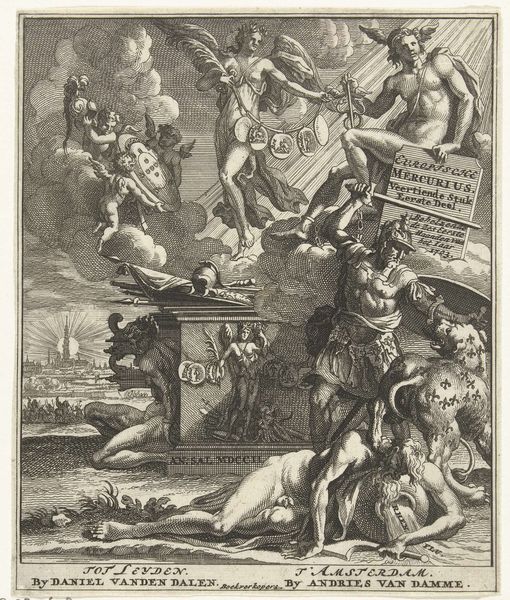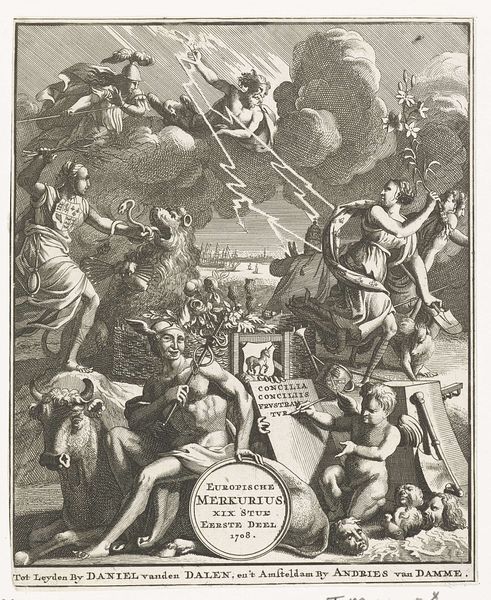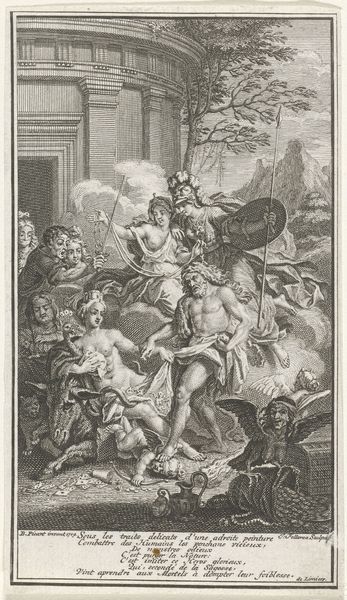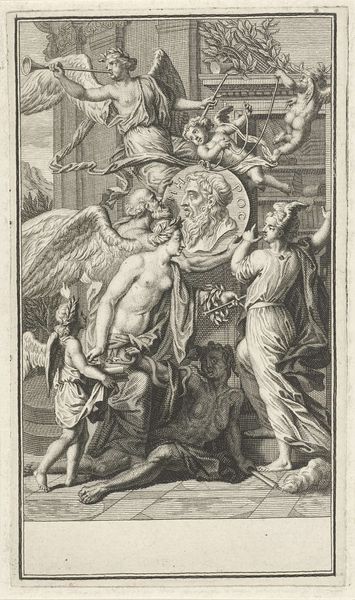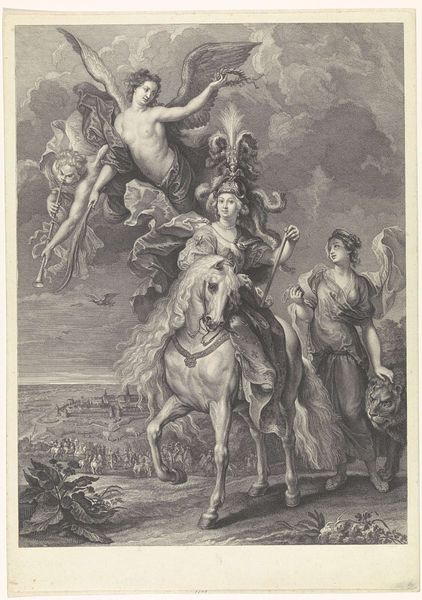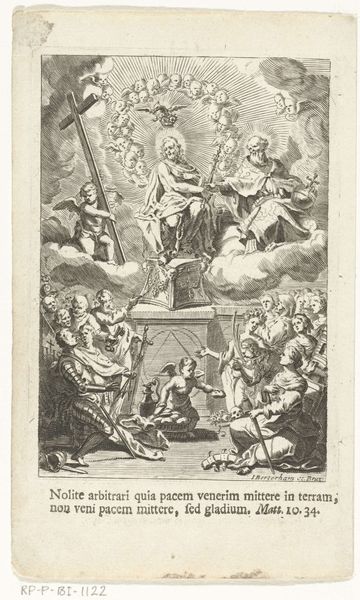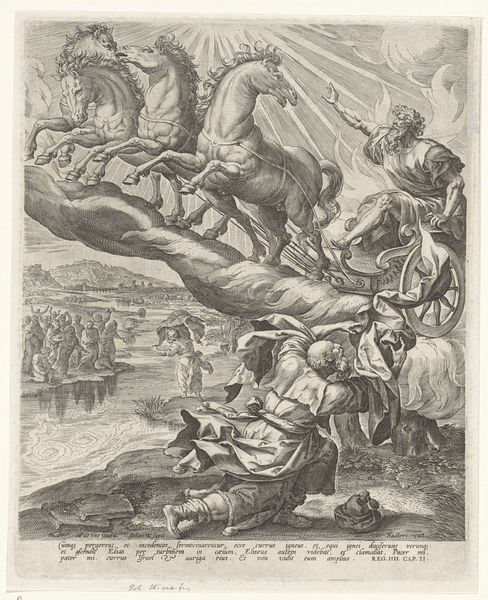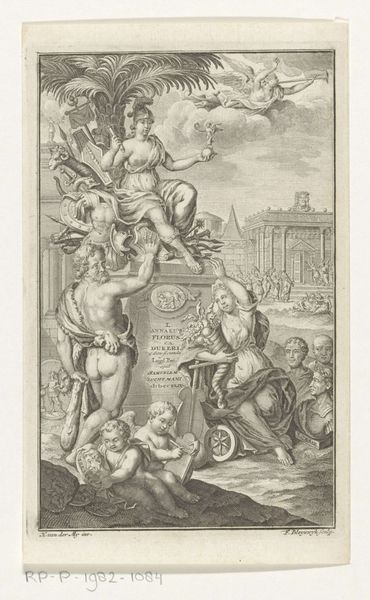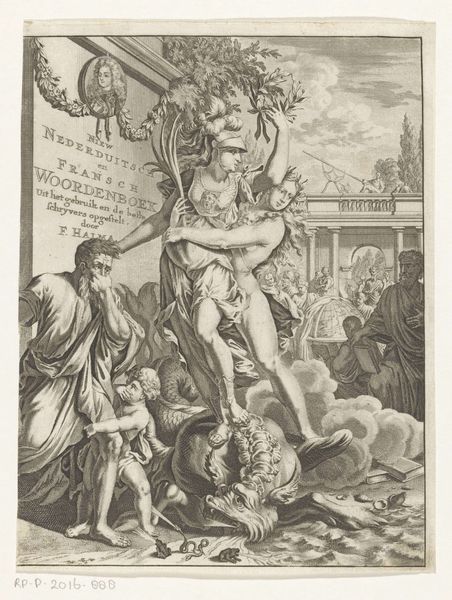
engraving
#
allegory
#
baroque
#
figuration
#
line
#
history-painting
#
engraving
Dimensions: height 180 mm, width 138 mm
Copyright: Rijks Museum: Open Domain
Curator: Jacob Folkema created this engraving, titled "Allegorische voorstelling met vrouw, Vader Tijd en putti", in 1720. Editor: There's an almost overwhelming feeling of density here—so many figures crammed together, and yet, the fineness of the engraving gives it a surprising lightness. Curator: The density speaks to the complexities of the allegorical genre popular at the time. Think of it as a visual argument, presenting layers of symbolism meant to unpack particular historical and societal claims. How do you see gender represented within such a complex visual? Editor: It’s fascinating. We have this central female figure surrounded by symbols of navigation and prosperity—but literally underpinned by figures of labor: sailors in the distance, this sort of merman pumping water into the scene... All literally providing the basis for her idealized stance. It lays bare, in some ways, the means of production needed for any idea of 'allegorical' greatness. Curator: Exactly. The woman at the center holds a compass, suggesting knowledge and perhaps colonial expansion. But the 'merman' grounds the image in concrete realities. We need to question who really benefits and to what material extent they are truly acknowledged by all of these symbols. The Baroque clearly has class divides in its message! Editor: The engraver uses fine lines to show light glinting off objects. Looking closely at the figure of Father Time standing right behind the seated woman holding up a scythe - an absolute emblem for the labor of reaping and production. This detail of Father Time shows, literally, labor looming in the background: laboring to maintain itself! Curator: Indeed. These aren’t just aesthetic flourishes; they speak to the era's dependence on maritime trade and labor exploitation for accruing wealth. Understanding the full narrative of Folkema's allegory demands scrutiny of this nexus between human work, global commerce, and evolving social norms. It reminds us how often dominant symbols serve to naturalize and obscure inequity. Editor: Examining the materials and modes of production of the art object itself alongside its subjects exposes similar disparities of representation. It serves as a great lens to explore historical narratives through art. Curator: Absolutely. Engaging with "Allegorische voorstelling met vrouw, Vader Tijd en putti" requires us to confront uncomfortable truths about how narratives of progress and success were historically constructed—often masking the sacrifices of certain communities for the advantages of others.
Comments
No comments
Be the first to comment and join the conversation on the ultimate creative platform.
